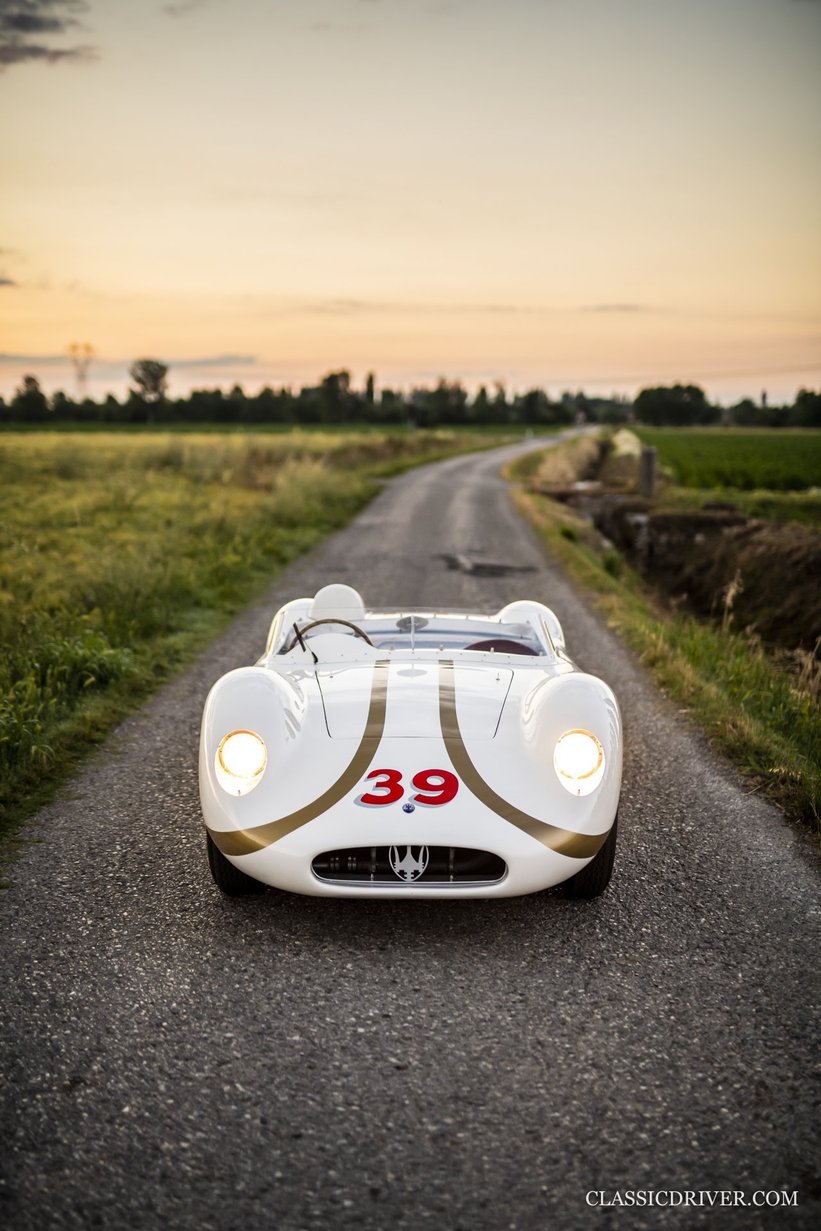

The triptych of ‘1950s racing car’, ‘Italian’ and ‘red’ is enough to trigger the enthusiasm and dreams of any historic-car enthusiast. Of course, the ex-works 1956 Maserati 200S S/N 2405 isn’t red today, but it harks back to another dream period, the American regional and national races of the ’50s, mostly run in California and Florida, where the most legendary sports cars raced in distinctive liveries.

This car was born red with Fiandri coachwork, similar to the Maserati 150S bodies, as Mattia Colpani and Enrico Renaldini from Brixia Motor Classic near Brescia in Italy remind us. But before telling us more about the car’s history, they took us for a drive in the Italian countryside at sunrise. It almost goes without saying that this is an offer you don’t say no to, especially when the car is driven to the full.


As we were starting to become deaf after the spectacular drive, we asked the duo to share with us what it feels like to drive such a car: “The 200S is very loud and fast,” says Mattia. “Actually, the faster you drive it, the lighter it feels; you really need to concentrate. It’s easier to drive than a Ferrari 500 Mondial, but it’s also lower, so you feel all the bumps; it’s also faster in corners.” Enrico adds: “The tubular chassis makes a huge difference. It’s actually not that far from the driving sensations of an Osca, with a bigger engine, of course.”

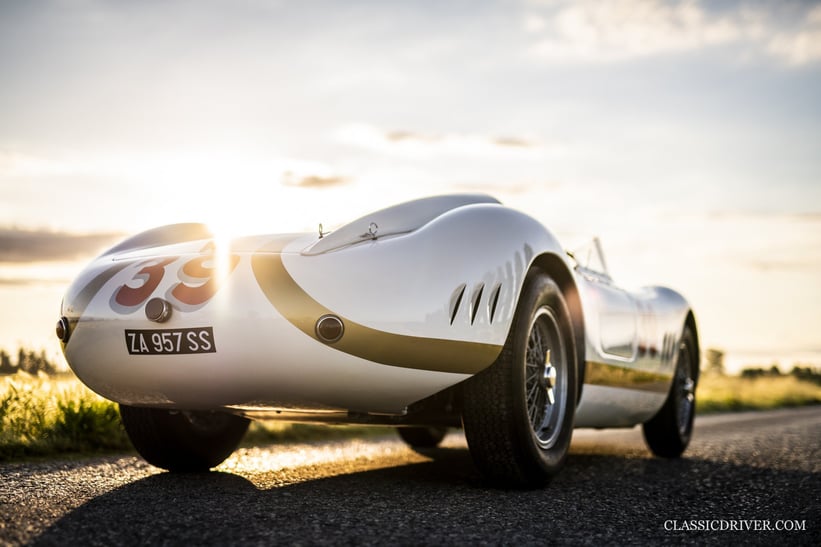

To understand why this 200S today wears a Fantuzzi body and this unique livery, we have to delve into its history. First, in 1955, Maserati developed both the 150S and 200S on two almost identical chassis to succeed the A6 GCS. The four-cylinder engine used in Formula 2 was to be used for the Tipo 52, or 200S. The 150S, with its smaller 1.5-litre aluminium engine, was tailored for privateers, while the bigger engines were planned for the official Maserati drivers such as Fangio or Moss.


The 200S really took off in 1956, as only one had been assembled in 1955. This is where our car changed the destiny of the 200S. According to most experts, there’s a very strong probability that #2405 – produced in June 1956 with its Fiandri body, four-speed gearbox, Jaeger instruments, Cibie headlights and twin Weber carburetors – is the works car that was driven by Stirling Moss that same month at the Gran Premio Supercortemaggiore at Monza, also known as 1,000km of Monza. Moss finished second, 27 seconds behind the winning Ferrari Testa Rossa.
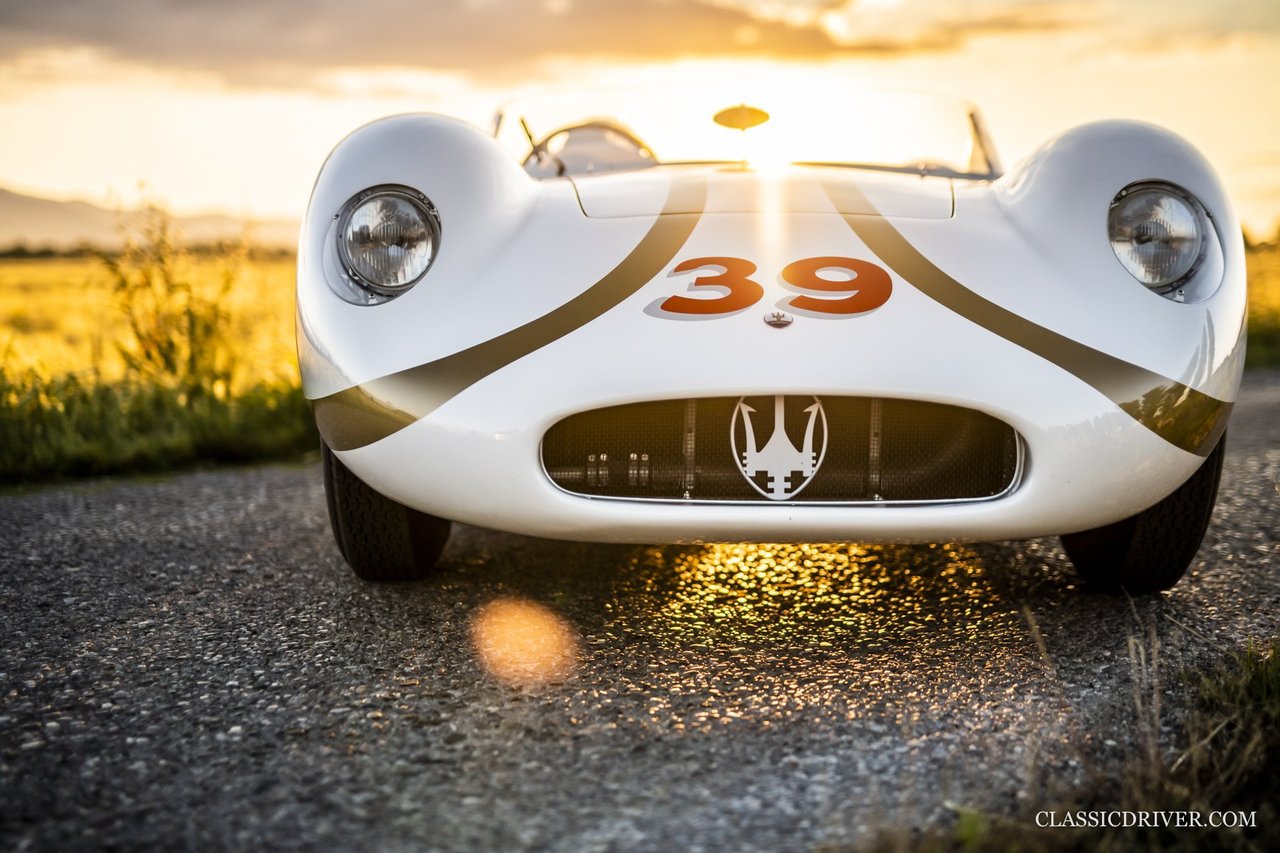


Sandwiched between the smaller 150S and its bigger sister the 300S, the 200S managed to be a commercial success for Maserati. While the first five cars were assembled with the Fiandri body, the 200S would later adopt the sleeker Fantuzzi body with its longer nose. In 1957, a new rules appendix introduced extra requirements such as a full windscreen with wipers, two doors, a spare wheel and a soft top. The 2.0-litres that complied with these regulations were called 200SI, for Sport International.


Maserati’s official team raced at the 1956 Bari Grand Prix with #2405, before sending it to San Francisco in August 1956. The well known privateer Lance Reventlow, heir to the Woolworth fortune immediately, bought the car in order to race it. Such an exotic and important car didn’t go unnoticed on the local racing scene: #2405 was featured in Sports Illustrated magazine and even made the cover of Road & Track in 1957.

In 1957, Reventlow had his 200S repainted in a white-and-blue livery and asked for modifications to comply with the CSI rules in order to compete at Sebring. #2405 was raced against the three official Maseratis, one of them being driven by Fangio and Moss. After the race, which the car didn’t finish, #2405 was sent back to Italy on the same boat as the official cars for a major mechanical overhaul and some upgrades, such as a bigger fuel tank.


Reventlow’s plan was actually to race his car in Europe. He first entered the Spa Grand Prix in May 1957, but didn’t finish. In the 1,000km of of the Nurburgring, Fangio was seen at the wheel of #2405 for demonstration laps with Reventlow as his passenger. The next race, the Vanwall Trophy at Snetterton in the UK, changed the destiny of #2405. A contemporary race report takes up the story: “Reventlow clipped the rear of John Horridge’s Lister-Bristol and both cars spun onto the outfield and rolled, the drivers being flung from their vehicles. Reventlow landed at the foot of a spectator protection bank, but his Maserati landed on top of him while miraculously straddling him. As a result, if Reventlow was virtually unscathed, his Maserati was seriously scratched.”
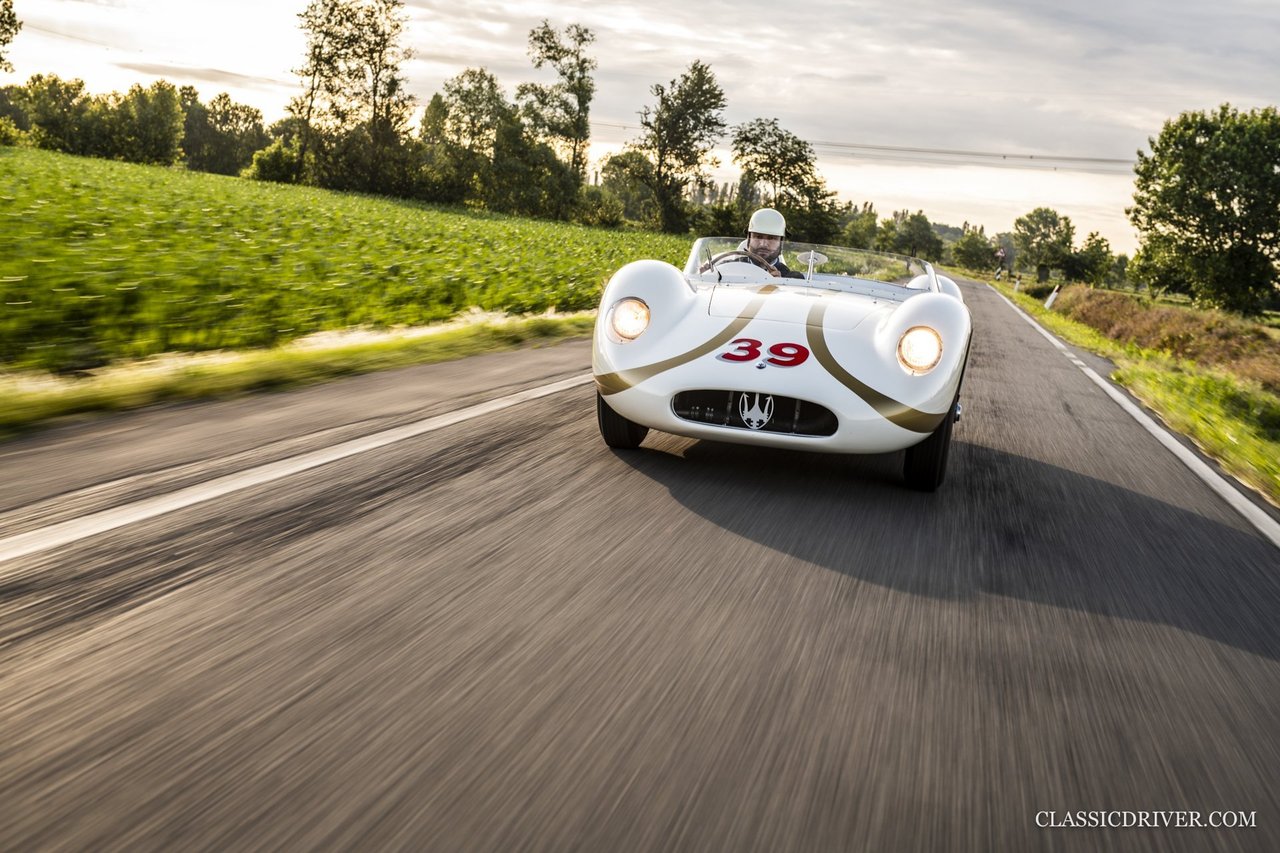

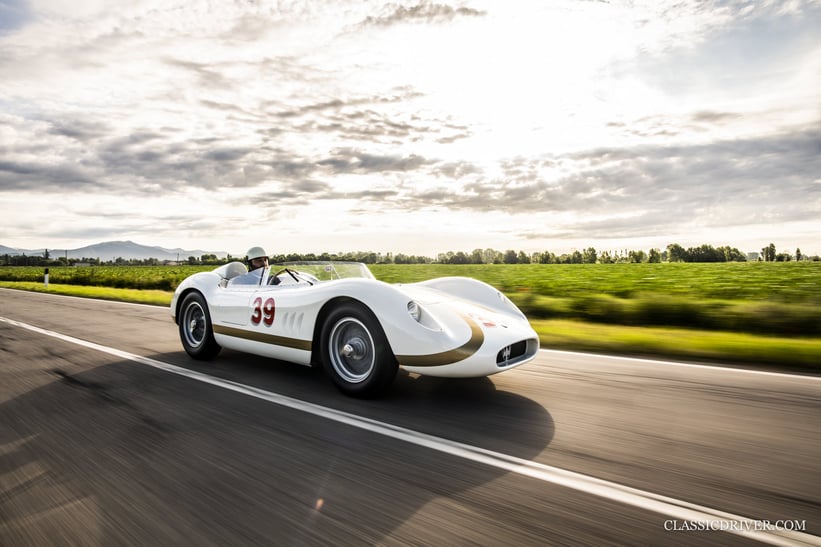
As often in period, far from being chilled by his accident, Reventlow’s priority was to get the car fixed by Maserati, no matter the cost. Instead of repairing the actual car body, Maserati suggested that Fantuzzi manufacture a brand-new body for the same cost, which would also allow fitting the new fuel and oil tanks at the back. As soon as the car was fixed with its new body, it was shipped to the Bahamas for Speed Week, where it managed strong results before heading to Laguna Seca in January 1958. In July of the same year, the car was unveiled with a new livery: white with a double longitudinal golden strip, aerodynamic headrest, a grille with the Trident badge and air outlets on the side. And this is what it looks like today.
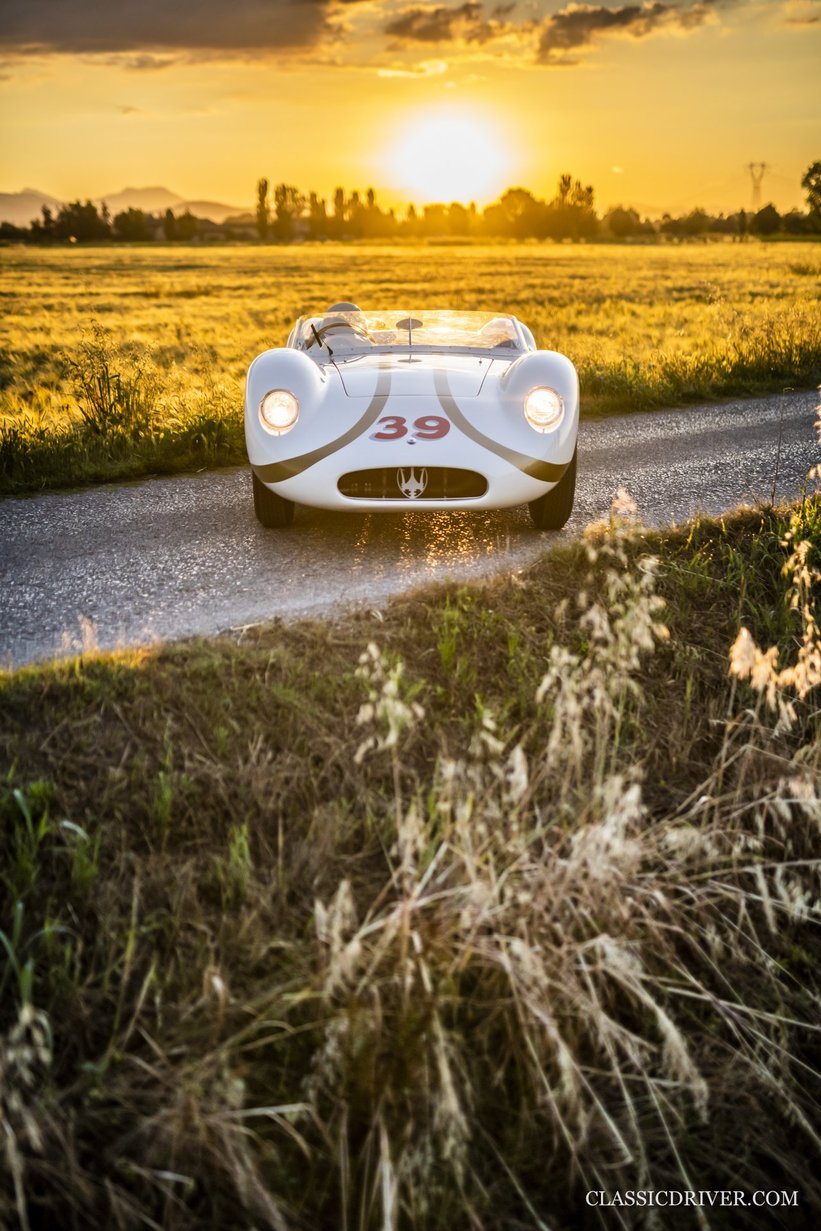
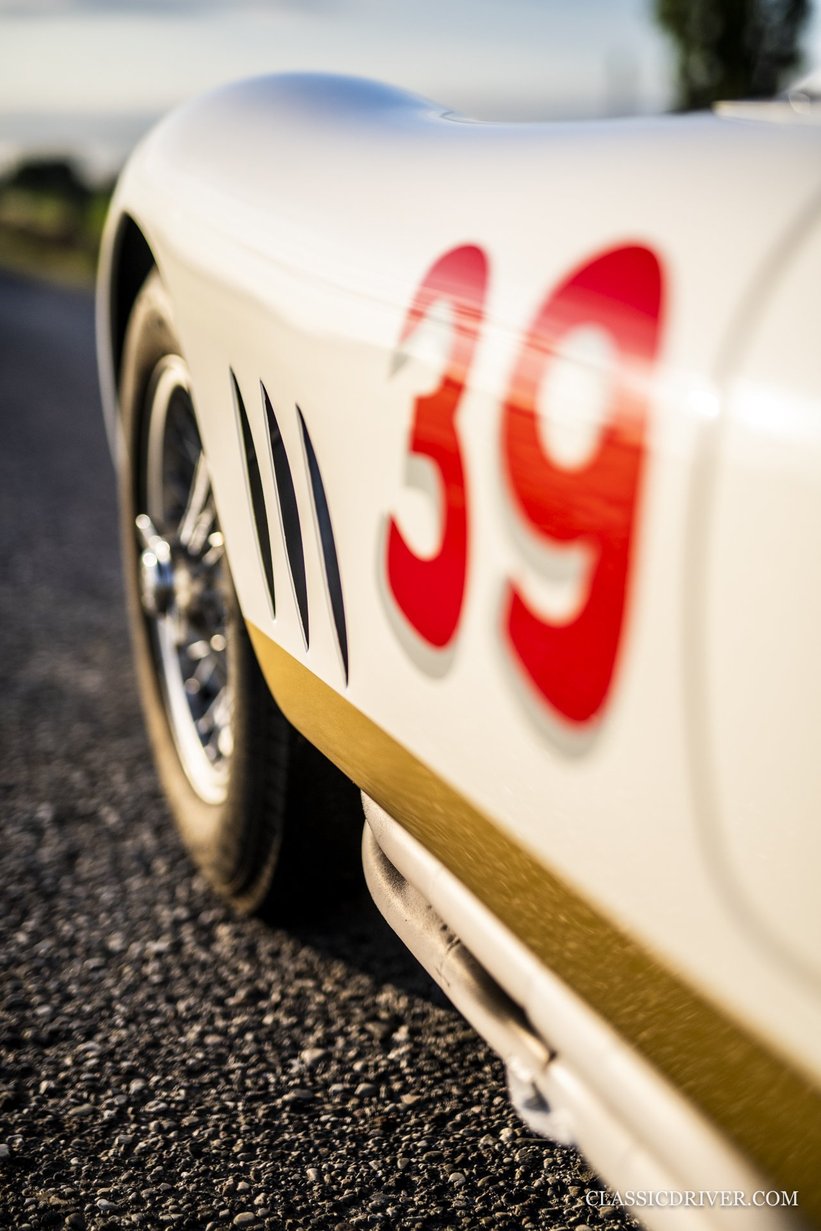
David Lane, the new owner of #2405, competed with this livery in the 1958 Cocoa Sports Car Race and finished first in class. The 200S then became a regular sight at most 1958 SCCA regional races, before Lane bought a Ferrari 250TR a year later, in July 1959. It’s only in the late ’70s that #2405 was seen again, in a New York-based collection. The then-red car was sold in Italy in the ’90s and entered in multiple Mille Miglias. In 2014, the Fantuzzi-bodied 200S was entered in the Chantilly Art & Elegance concours with its original soft top. Last year, its new Italian owner decided to take the car back to the July 1958 livery – a great tribute to its history. The paint job was finished just in time for our photoshoot and the car then took part in the 2020 Mille Miglia last October.

The Brixia Motor Classic duo conclude: “The best events are those where you can really enjoy the car on empty roads with no jams. And of course, a good racetrack is always welcomed.” Those are two things that both Modena Cento Ore and Journées d’Automne events offer – and we think this is precisely where this car should be seen this year.
Photos: Rémi Dargegen for Classic Driver © 2021
































































